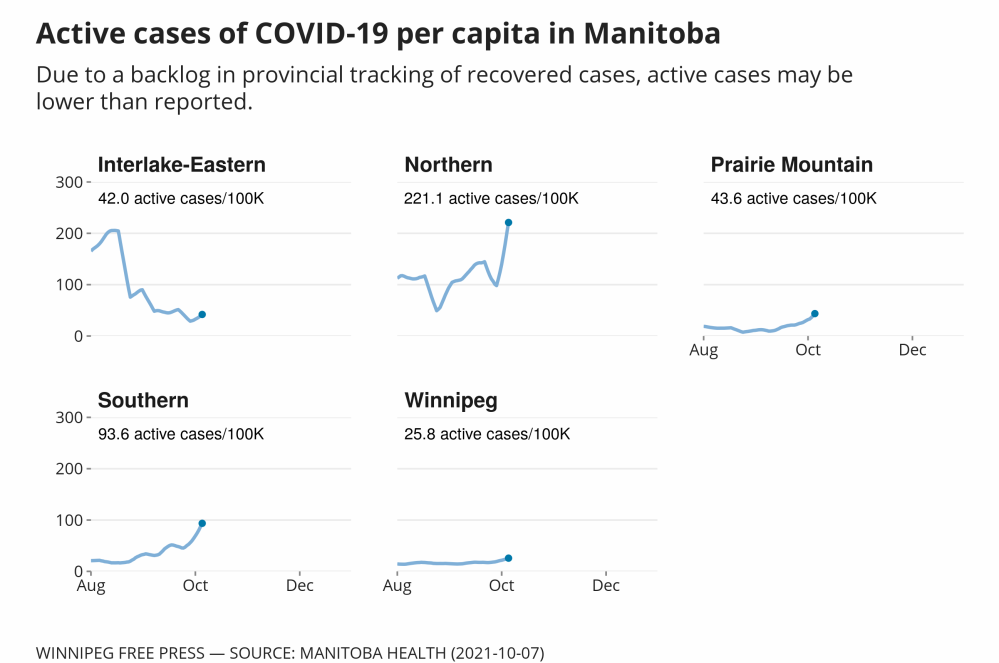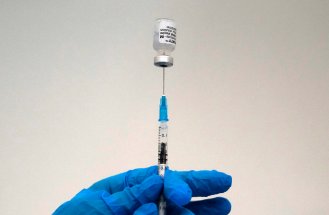No valid reason for shielding regional data
Read this article for free:
or
Already have an account? Log in here »
To continue reading, please subscribe:
Monthly Digital Subscription
$0 for the first 4 weeks*
- Enjoy unlimited reading on winnipegfreepress.com
- Read the E-Edition, our digital replica newspaper
- Access News Break, our award-winning app
- Play interactive puzzles
*No charge for 4 weeks then price increases to the regular rate of $19.00 plus GST every four weeks. Offer available to new and qualified returning subscribers only. Cancel any time.
Monthly Digital Subscription
$4.75/week*
- Enjoy unlimited reading on winnipegfreepress.com
- Read the E-Edition, our digital replica newspaper
- Access News Break, our award-winning app
- Play interactive puzzles
*Billed as $19 plus GST every four weeks. Cancel any time.
To continue reading, please subscribe:
Add Free Press access to your Brandon Sun subscription for only an additional
$1 for the first 4 weeks*
*Your next subscription payment will increase by $1.00 and you will be charged $16.99 plus GST for four weeks. After four weeks, your payment will increase to $23.99 plus GST every four weeks.
Read unlimited articles for free today:
or
Already have an account? Log in here »
Hey there, time traveller!
This article was published 07/10/2021 (1524 days ago), so information in it may no longer be current.
The principle of access to information in the public sector is that records held by government should be disclosed upon request unless there is a valid reason not to.
In Manitoba, those principles are codified in the Freedom of Information and Protection of Privacy Act (FIPPA). Government is required to make information available to the public unless it falls under one of the exemptions in the act.
Whether public records are requested formally through FIPPA or informally, government has an obligation to follow the principles of openness and accountability in the legislation. It’s not up to civil servants or politicians to release information only when it suits their needs.
The provincial government has played fast and loose with those principles throughout most of the pandemic. Public-health officials have routinely refused to release statistics around contact tracing, testing and case modelling. More recently, Dr. Brent Roussin, the chief provincial public health officer, has denied repeated requests to disclose test positivity rates (the percentage of those infected with COVID-19 who have been tested) by region.
The province collects and stores mountains of pandemic-related data, including COVID-19 infection rates, hospital admissions and vaccine uptake by age, gender and region. That information is used to track the spread of the virus and to help inform the province’s pandemic response strategies.
However, those public records do not belong to civil servants or elected officials; they belong to the public. Unless there is a valid reason not to disclose specific records, they should be made available upon request.
To its credit, the province does proactively release a sizable amount of information online related to the pandemic, including daily infection numbers, hospitalizations and vaccine uptake. However, it’s only a fraction of what is collected. More detailed information is often required to better understand how the pandemic is progressing, what the public risks are and how government is responding to growing risks.
By denying access to that information, government is keeping the public in the dark about key aspects of the pandemic.
Dr. Roussin has been asked for weeks to disclose test positivity rates by Manitoba region. He has consistently refused. The province releases five-day averages for the province as a whole and for Winnipeg, but has declined to do so by health region.
Dr. Roussin has been asked specifically to release test positivity rates for the Southern Health region, where COVID-19 case numbers and hospitalizations have soared in recent weeks. He says he won’t disclose that information because there’s too much day-to-day variability in the data.By denying access to that information, government is keeping the public in the dark about key aspects of the pandemic.
That’s not a valid reason to deny release, nor does it meet any of the exemptions in FIPPA. It also didn’t stop the province from releasing test positivity data for two districts in November: Steinbach and the Rural Municipality of Hanover. The province has not explained why it released that information almost a year ago but won’t now.
Unless public-health officials can demonstrate the harm in disclosing test positivity rates by region, that information should be released.
Test positivity data is one of many important surveillance tools used to monitor the spread of infectious diseases. The World Health Organization cites it as a key metric that should be assessed when making decisions regarding COVID-19 restrictions.
The public has a right to see the data.









